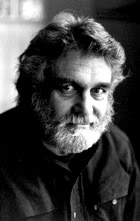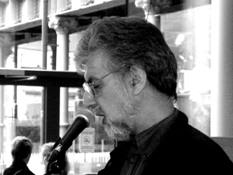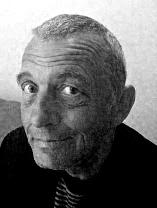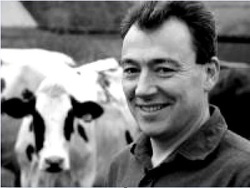An Introduction to... Louis Jenkins
7/2/2011
 Originally published on everythingbutamisprint.tumblr.com in February 2011. "Always be a poet, even in prose" —Charles Baudelaire There is much debate over prose poetry's right to exist as a literary genre. For many, the pairing of the two words to describe a piece of writing is oxymoronic; it seems that most critics cannot abide prose poetry's desire to place itself somewhere between the two forms of writing. Some argue that, due to its heightened attention to language and fondness for techniques common to poetry (such as metaphor, fragmentation, compression, repetition and rhyme) the form belongs to poetry alone, whilst others point in the opposite direction, towards an aversion to line breaks and a reliance on prose's association with narrative – perhaps evidence enough that it should be considered only under the prose genre's already vast umbrella. Peter Johnson, editor of The Prose Poem: An International Journal, suggests that "just as black humor [sic] straddles the fine line between comedy and tragedy, so the prose poem plants one foot in prose, the other in poetry, both heels resting precariously on banana peels." Prose poetry is described as such because of its fusion of prosaic and poetic elements; it is a literary hybrid that fervently refuses to be pigeonholed. Perhaps the most helpful definition comes from the Serbian-American poet Charles Simic, who likens the form to "peasant dishes, like paella or gumbo, which bring together a great variety of ingredients and flavors [sic], and which in the end, thanks to the art of the cook, somehow blend."
1 Comment
An Introduction to... Humberto Gatica
2/12/2010
 Originally published on everythingbutamisprint.tumblr.com in December 2010. Hafan Books, the Swansea-based publisher who donate all proceeds to the city's Asylum Seekers Support Group, are building quite a reputation outside of philanthropy for their beautiful A4-sized collections of short-fiction, drama and poetry. Each collection, the most recent of which being two one-act plays by Wales' renowned concrete poet Childe Roland (real name Peter Meilleur), is accompanied by a set of photographs included to compliment the text, reflecting back upon it without ever simply attempting to literally illustrate the work of the writer. In 2008, Hafan published the first poetry collection of Humberto Gatica, a Chilean exile who arrived in Swansea shortly after the 1973 military coup. The poems, included in The Sand Garden / El Jardin de Arena in both Spanish and English, deal with the enforced exile of Gatica and his family and the subsequent struggle to adapt to life in a foreign country. Fittingly, whereas Hafan's other marriages of literature and visual art are often collaborative, The Sand Garden is instead the sole work of Gatica, with the poems accompanied on the page by the poet's black and white photographs of exile in Swansea. An Introduction to... J. Brookes
25/10/2010
 Originally published on everythingbutamisprint.tumblr.com in October 2010. J. Brookes is almost certainly not as well-known outside his adopted hometown as he should be. Well-respected by the well-respected (Sheenagh Pugh and Robert Minhinnick have both offered particularly praising analyses of his latest collection), the South-East Londoner who moved to Cardiff in the 1990s is considered to be one of the Welsh capital's finest contemporary poets. Brookes' road from The Big Smoke to his current home in south Wales took in many sights; born in 1951, he left Britain almost straight from school to travel Europe and the Middle East (although not before getting kicked out of Leeds Art College). After a decade of hitch-hiking his way across the Eurasian continent, he briefly settled in Ireland in the mid-1970s, where he achieved a degree in English at the University of Ulster. Brookes would then go on to teach his degree subject in the Sudan and Turkey, pausing only to complete a Masters in Sheffield, before making a permanent return to Britain to take a job at a psychiatric hospital in Brighton. He fell in love with a Welsh woman and moved to Cardiff in 1990, where he founded The Yellow Crane poetry magazine (1995–2005). An Introduction to... Jim Carruth
14/10/2010
 Originally published on everythingbutamisprint.tumblr.com in October 2010. I first became aware of the man they call "Scotland's leading rural poet" at the 2009 Edinburgh Book Festival. Michael Russell, the then Scottish Minister for Culture (amongst other things), had already introduced a number of fine personal selections from the Scottish Poetry Library when he welcomed Carruth to the stage to read '264'. Apparently persuaded to give this impromptu reading by a glass of wine Russell had placed in his hands, Carruth captivated us with an enigmatic narrative that kept even the most acute audience members guessing until the end. Born in Johnstone in 1963 and raised on his family's farm near Kilbarchan, Carruth's work gives voice to what he believes has become a fragile way of life. The poet calls his latest collection Cowpit Yowe (Ludovic Press, 2008) an exploration of "the changing language of agriculture and the seasons...how learning on the farm is built on the knowledge of previous generations and how this is threatened by increasing challenges facing this rural way of life." However, although I greatly admire Carruth for his active role in the preservation of agricultural traditions and practices, I must admit to preferring his poems which are only set in this rural landscape and do not deal directly with farming’s lamentable struggle to survive. |
Categories
All
Archives
January 2024
|
 RSS Feed
RSS Feed
